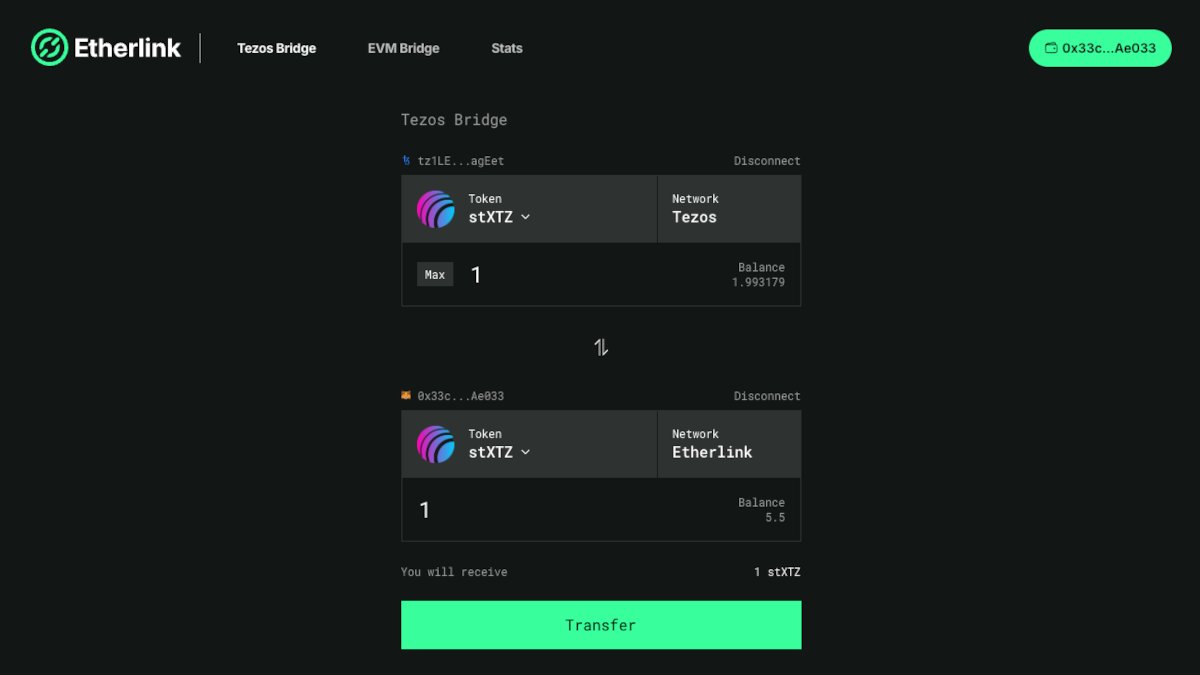Stacks price
in USD


About Stacks

Stacks’s price performance
Stacks on socials




Guides
Stacks on OKX Learn


Stacks FAQ
Dive deeper into Stacks
When introduced in 2009, Bitcoin brought about remarkable autonomy using blockchain technology, signifying a significant leap forward. However, as blockchain technology has evolved, it has revealed certain constraints within Bitcoin's foundational structure. Compared to Ethereum platforms, Bitcoin falls short in terms of programmability and versatility necessary for extensive functionality. To fully unleash the latent capabilities of the Bitcoin network, Stacks (STX) has introduced smart contracts and decentralized applications (DApps) to this innovative blockchain.
What is Stacks?
Stacks, formerly known as Blockstack, is an open-source blockchain platform designed to enhance the capabilities of the Bitcoin blockchain by introducing smart contracts and DApps. Through Stacks, Bitcoin users and developers can engage with smart contracts, enabling access to decentralized finance (DeFi) protocols and non-fungible tokens (NFTs) – aspects absent from Bitcoin's original design.
As Stacks operates as layer-2 blockchain, introducing smart contracts doesn't alter any of Bitcoin's inherent features, allowing it to preserve its characteristics like security and stability. Furthermore, since Stacks is built upon Bitcoin's base layer, every action within the Stacks ecosystem is backed by the security of Bitcoin.
The Stacks team
In 2013, Muneeb Ali and Ryan Shea, both Princeton University alumni, conceptualized the idea of Stacks. The co-founders committed themselves to the project's development, leading to the Mainnet's successful launch in January 2021. Since then, the team has expanded to encompass more developers, advisors, and contributors, enriching the project's growth and impact.
How does Stacks work?
Ethereum employs Layer 2 protocols for its scaling solutions, while Stacks adopts a distinct consensus algorithm to establish a scaling layer that integrates smart contracts into the Bitcoin network. Stacks introduces Clarity, a novel smart contract code, to uphold Bitcoin's network security and stability. Clarity's design prioritizes secure and predictable execution, minimizing vulnerabilities and unforeseen issues.
Stacks also introduced Proof of Transfer (PoX), a distinctive consensus mechanism where STX miners leverage their Bitcoin holdings to lead mining in the next block, earning new STX tokens. Each block mined on the Stacks blockchain stores users' identities and uses this information to interact with the Stacks ecosystem. Given the interconnectivity between Stacks and Bitcoin blockchains, any modifications made are interconnected.
STX: The utility token of Stacks Network
STX is the native utility token of Stacks Network, enabling the integration of DeFi, NFTs, apps, and smart contracts onto the Bitcoin blockchain. For network security and DApp development, STX plays a crucial role in the Stacks blockchain.
Stacks tokenomics
With a hard cap of 1.818 billion coins, approximately 1.38 billion STX tokens are in circulation. Following a fixed annual supply similar to Bitcoin, STX is projected to reach its hard cap by 2050.
Stacks mining
Utilizing the PoX consensus mechanism, Stacks introduces an energy-efficient approach in contrast to Bitcoin's resource-heavy mining. STX miners on the Stacks network bolster its security by using Bitcoin to add new blocks, receiving STX block rewards as compensation.
STX use cases
As the native utility token, STX is essential in ensuring the network's seamless operation. These roles encompass accessing, constructing, and engaging with DApps, contributing to network governance, covering transaction fees, and facilitating purchases.
STX distribution
In 2017, when Stacks was launched, the Genesis block had 1.32 billion STX distributed as follows:
- 8.34 percent went to a long-term treasury.
- 13.53 percent was given to the founders of the project.
- 8.23 percent was allocated to equity investors.
- 5.65 percent was kept for employee distribution.
- 29.93 percent was distributed in the 2018 token sale.
- 9.09 percent was distributed in the 2019 token sale.
- 3.03 percent was set aside for the Reg A app mining program. This program rewards application developers and reviewers.
- 22.20 percent was designated for a short-term treasury.
The future of Stacks
The Stacks Network's future is poised for transformation with the forthcoming Nakamoto upgrade, representing a substantial leap in technological progress. This upgrade brings forth a spectrum of significant enhancements. Upon Nakamoto's implementation, Stacks will fortify its security by harnessing Bitcoin's hash power. This upgrade will also usher in noticeable speed improvements, empower atomic BTC swaps, and introduce a trust-minimized Bitcoin peg mechanism, among other noteworthy innovations.
Disclaimer
OKX does not provide investment or asset recommendations. You should carefully consider whether trading or holding digital assets is suitable for you in light of your financial condition. Please consult your legal/tax/investment professional for questions about your specific circumstances. For further details, please refer to our Terms of Use and Risk Warning. By using the third-party website ("TPW"), you accept that any use of the TPW will be subject to and governed by the terms of the TPW. Unless expressly stated in writing, OKX and its affiliates (“OKX”) are not in any way associated with the owner or operator of the TPW. You agree that OKX is not responsible or liable for any loss, damage and any other consequences arising from your use of the TPW. Please be aware that using a TPW may result in a loss or diminution of your assets. Product may not be available in all jurisdictions.

































